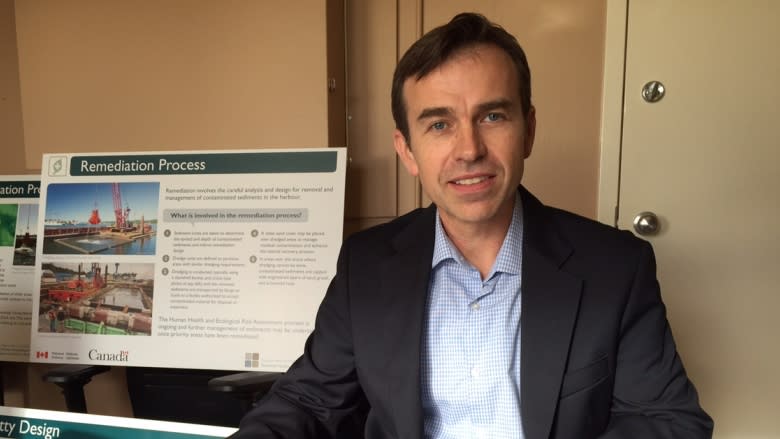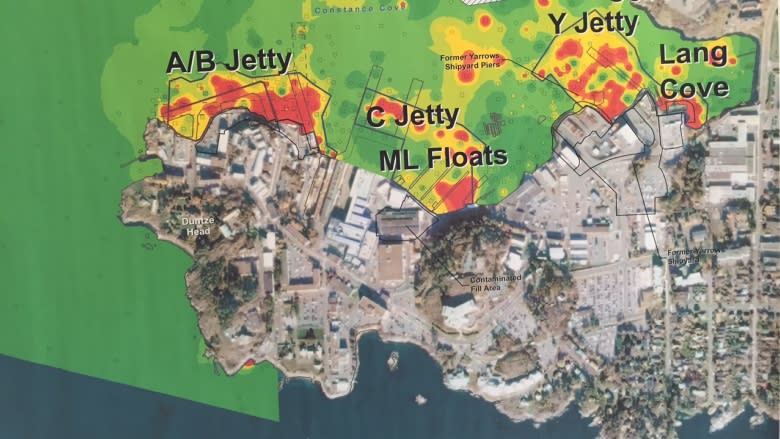Pieces of naval history emerge during Esquimalt Harbour clean up
The Royal Canadian Navy expected to find contamination at the bottom of Esquimalt Harbour after more than 150 years of shipbuilding and naval activity.
What cleanup crews did not expect to find in the dredged up sediment was pieces of naval history like service medals, uniform buttons, and even a couple thousand pairs of boot soles.
"The [boot] leather had degraded and was gone, but the sole was still left," said Duane Freeman, a senior environment officer at CFB Esquimalt, near Victoria.
"What we think more than likely happened is at the end of World War II, as we were releasing sailors, they basically had their extra boots and they threw them over the side to get rid of them."
The Department of National Defence is spending up to $160 million to dredge areas contaminated by naval activities and encourage marine life to return to Esquimalt Harbour.
The harbour is the home port for Canada's West Coast navy.
The navy now has a strict "nothing over the side" policy for all ships, Freeman said. But the ways of the past are making for a unique collection of historic items at the base.
A vice-admiral's personalized coffee mug that disappeared 30 years ago was sifted out of the dredged sediment and has been returned to the now-retired officer.
Crews also found a wallet with a navy identification card from the 1940s or 1950s that was perfectly preserved after it ended up in the water and settled in the soft sediment on the bottom of the harbour.
Officials are trying to get in touch with the sailor's family to see if they would like the wallet back, Freeman said.
"It's really interesting to try to reunite people with some of their items," he said.
Old plates, cutlery and personal items such as straight razors engraved with names have also turned up.
"We realized that it was actually telling a bit of the history of the navy," Freeman said.
Historians are also now involved to help catalogue the thousands of items and determine which ones are historically significant.
More dredging to come
Thousands more items could turn up before CFB Esquimalt completes the environmental remediation project in 2020.
There are several more contaminated areas in the harbour that the navy plans to clean up during the project, which is also part of a larger modernization of jetties at the base.
To remove the contaminants, a crane on a barge is used to pull up the top metre of sediment.
The crane has a bucket with GPS technology that allows the crew to accurately scoop particular areas where tests have found pollutants such as heavy metals or hydrocarbons, Freeman said.
The sediment is then carefully sifted so the contaminants can be disposed of in a way that meets environmental standards. That sifting process is where the unexpected items emerge.
The base hopes to eventually find a way to display some of the historic pieces that are uncovered.
Anyone who recognizes items found during the harbour dredging and would like more information can call CFB Esquimalt for more information at 250-363-4006.





